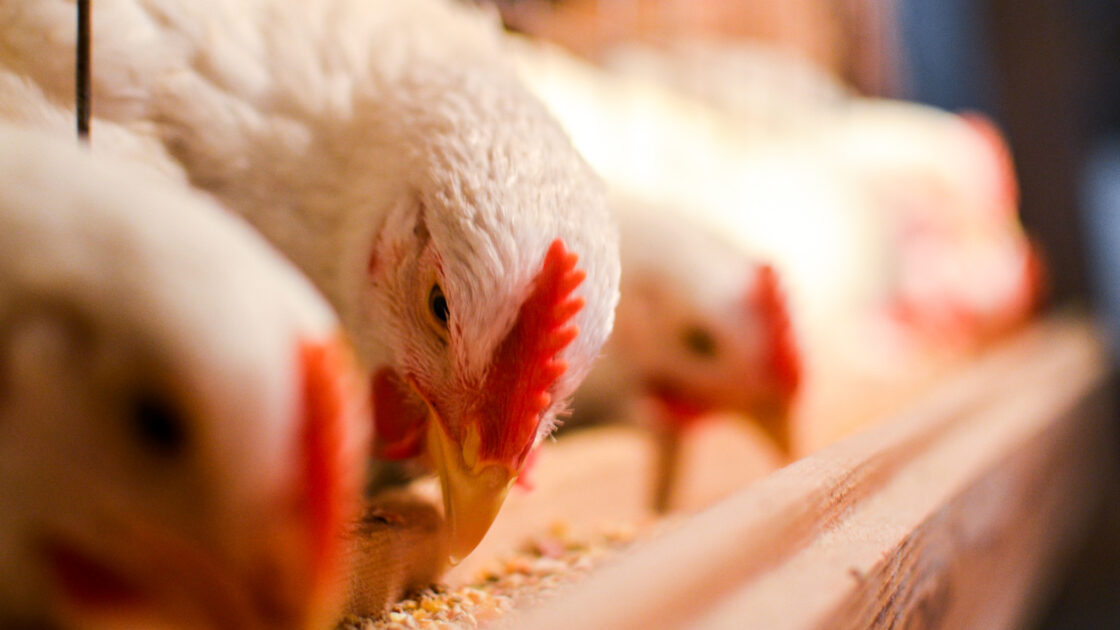FDA’s Antibiotics in Livestock Feed Ruling Now in Effect, but Drug Sales Still Rising

It’s been three years since the FDA announced its ruling, but antibiotics classified as medically important are now banned from use in livestock feed to enhance animal growth.
These antibiotics important to human health can no longer be given to livestock without a veterinarian’s prescription. Antibiotics have long been used in livestock production to speed animal growth, and under the new policy, drug manufacturers are also required to note on the drug products that they should not be used for growth enhancement.
But according to recent FDA data, sales of medically important antibiotics rose by nearly two percent in 2015—a 26 percent increase over 2009 sales. Some of that may be due to the expansion of production, but it doesn’t account for all of it.
An analysis conducted by the Pew Trusts last summer found that as much as one-third of medically important antibiotics used in livestock feed did not include duration of use information on the labels—a lapse that has likely led to prolonged use. (The FDA is reviewing this issue and has extended its public comments period until March 13, 2017.)
“Another problem the FDA hopes to address through that consultation process relates to the blurry line between growth promotion and disease prevention,” reports STAT.
Antibiotics are still allowed to be used for the prevention of diseases and infections, which occur frequently in factory farm settings. Animals are kept in close proximity—particularly with the rise of “cage-free” egg producers where the hens are now removed from cages, but given no protection from other animals. This can lead to fighting, or attacking injured animals, spreading infections along the way, and antibiotics are routinely given in consideration of the spread of disease and high rates of infection.
Advocacy groups such as the Natural Resource Defense Council, say there needs to be proactive efforts directed toward healthier alternatives that are both better at preventing the spread of disease and promoting more humane production.
Dr. David Wallinga, senior health officer of NRDC’s health program, says the rise in antibiotic use is disappointing, considering the efforts the FDA has put into encouraging decreased use of the drugs.
“The signal this sends is that whatever we’re doing is not enough and not fast enough to address the urgency of the health threat,” Wallinga told The Huffington Post. “Our fear is that the FDA’s efforts are so limited that they might do very little to really address this enormous overuse.”
But according to Ramanan Laxminarayan, director of the Center for Disease Dynamics, Economics and Policy, based in Washington, D.C., the FDA’s policy is a major step in the right direction.
“Before this [rule] came about, you could go to a veterinary feed supply store and basically buy an 80-pound bag or 100-pound bag of antibiotics without a prescription, whereas to get 200 grams of that would require a prescription for human use. And that did not make any sense at all,” Laxminarayan told STAT.
Required veterinary supervision will cut down on antibiotic use, as well as make them more expensive.
“Anything that increases the cost of using antibiotics essentially will push manufacturers away from using antibiotics,’’ Laxminarayan said.
But Wallinga says it’s still not enough.
“Every year, we delay really tackling the root of this issue, [and] the threat to all of us becomes greater,” he told the Huffington Post.
Still, a number of U.S. food manufacturers including Subway, McDonald’s, Wendy’s and Taco Bell, have pledged to phase out all antibiotics from their chicken supplies, where most of the drugs go.
According to the NRDC, approximately 70 percent of all antibiotics sold in the U.S. are sold for use in poultry and other livestock.
The group says that both The World Health Organization and the American Academy of Pediatrics have warned that “in order to keep antibiotics working to treat sick humans, the agricultural industry must stop misusing antibiotics by administering them to animals that are not sick for growth promotion and disease prevention.”
Overuse of antibiotics in livestock feed has been directly linked to the rise in “superbugs” bacteria resistant to antibiotic treatment. According to the World Health Organization, the rise of antibiotic-resistant bacteria could mean something as seemingly benign as a scraped knee could become deadly.
“This agricultural misuse is a significant driver behind the growing prevalence of drug-resistant infections,” says the NRDC. “The restaurant industry can help drive change by enacting purchasing policies to help keep life-saving drugs working at a time when evidence about the growing threat of antibiotic resistance is mounting.”
Find Jill on Twitter and Instagram
Related on Organic Authority
Plant-Based Foods Under Livestock-Industry-Led Attacks
Burger King Latest Chain to Pull the Plug on Antibiotics in Chicken
These 5 Health Foods Aren’t as Healthy as You Think

